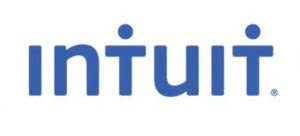Content

Where ‘one process’ factories exist, there is a market for the goods created, which establishes an independent market value for the good. Today, with multistage-process companies, there is much inventory that would once have been finished goods which is now held as ‘work in process’ . This needs to be valued in the accounts, but the valuation is a management decision since there is no market for the partially finished product. This somewhat arbitrary ‘valuation’ of WIP combined with the allocation of overheads to it has led to some unintended and undesirable results.
It was purchased to deliver sandwiches and was sold when it couldn’t perform that job. The car dealership, on the other hand, purchases vehicles for the sole purpose of reselling them. On the other hand, if a company is doing poorly, it will have a tendency to reduce inventories.
For example, on January 2, 2020, you purchase 100 crystals from your regular supplier at a cost of $4 each. On January 15, you need to purchase an additional 100 crystals, but your regular supplier raised the price to $6 each.
Introduction To Inventory And Cost Of Goods Sold
These methods allow you to apply a particular price to each product, which is important information that helps in many different areas of your business. Run your business on actual accounting costing methods for true cost calculations. DEAR uses FIFO and FEFO methods, as well as catering for inventory and serial/batch numbers and expiry dates – so you can store unique items and track inventory sales to specific end customers. With specific Inventory Accounting identification, the actual cost of the goods sold makes up the cost of goods sold and the value of the remaining inventory equals the specific cost of each unsold item. The average method is called the moving average in the perpetual system. The average is determined each time a new inventory item is purchased. The cost of goods sold for each sale is calculated by multiplying the moving average at the time by the number of items sold.
Nevertheless, these attributes of LIFO are present only in an inflationary environment. Under LIFO, a company always sells its newest inventory items first. So cost of goods sold will always be at its greatest amount; therefore, net income before taxes will be at its lowest amount, and taxes will be minimized, which is the major benefit of LIFO. The average inventory balance between two periods is needed to find the turnover ratio, as well as for determining the average number of days required for inventory turnover. If you only sold a single item, https://www.bookstime.com/ would be simple, but it’s likely that you have multiple items in inventory and need to account for each of those items separately. While this is not difficult, you can quickly run into complications when inventory costs vary. This method, commonly referred to as “LIFO,” is based on the assumption that the most recent units purchased will be the first units sold.

A sale stores the revenue and tax transactions, and shows as 100% profit on your Income Statement. At month end, an inventory update is run, a value is assigned, and this is then compared to the previous month’s inventory value. When you make a sale, you reduce your asset and increase your cost of sale, which transfers the inventory value from the Balance Sheet onto your Profit and Loss report or Income Statement.
Recommended Reading On Inventory Accounting
This is a more practical and efficient approach to the accounting for inventory which is why it is the most common approach adopted. Conversely, when prices fall , FIFO ending inventory account balances decrease and the income statement reflects higher cost of goods sold and lower profits than if goods were costed at current inventory prices. The effect of inflationary and deflationary cycles on LIFO inventory valuation are the exact opposite of their effects on FIFO inventory valuation. It allows you to evaluate the Cost of Goods Sold and, subsequently, your overall profitability. To effectively price your products, you must truly understand how much they cost you.
- These are not considered merchandise because the car dealership isn’t in the business of selling buildings and land.
- Your on-hand, unsold inventory needs to be included as an asset in end-of-year financial records.
- In the periodic inventory system, sales are recorded as they occur but the inventory is not updated.
- For example, assume that you sell your office and your current furniture doesn’t match your new building.
- This is because changing inventory costing methodologies often requires systems and process changes.
- Inventory turnover is the measure of the number of times inventory is sold or used in a time period such as a year.
There are a number of ways to account for the purchasing and integration of merchandise within a business, and the decision on how a business will do so rests on a number of factors. This course introduces you to the inventory valuation concepts of FIFO (‘first in, first out’), LIFO (‘last in, first out’), and the ‘weighted average’ for determining the overall cost. Choosing an inventory valuation method is a major decision a merchandising business entity will have to make before the merchandise is purchased. Merchandise inventory is the cost of goods on hand and available for sale at any given time. To determine the cost of goods sold in any accounting period, management needs inventory information. Remember that course where you used T accounts to learn how to record accounting transactions with balancing debits and credits (double-entry accounting)? That’s when you or your fellow students may have been wondering, which of the following is not an inventory account?
It should be steering the stewardship and accountability systems that ensure that the organization is conducting its business in an appropriate, ethical manner. So often they are the litmus test by which public confidence in the institution is either won or lost. For example, organizations in the U.S. define inventory to suit their needs within US Generally Accepted Accounting Practices , the rules defined by the Financial Accounting Standards Board and enforced by the U.S. Securities and Exchange Commission and other federal and state agencies.
Using Inventory Accounting Software
Inventory accounting is a term which refers to how you reflect the value of your company’s stock and inventory in your financial ledgers. Several methods are available, and the value of your stock-on-hand can vary at any given point in time depending on which method you choose. Like IAS 2, US GAAP companies using FIFO or the weighted-average cost formula measure inventories at the lower of cost and NRV. Unlike IAS 2, US GAAP companies using either LIFO or the retail method compare the items’ cost to their market value, rather than NRV. This one might sound obvious, but goods that a company plans on keeping are not considered merchandise.
Therefore, companies should carefully weigh inventory accounting methods to determine which method is most appropriate for the organization not only today, but as the company grows. There is more than one inventory accounting method to use to value inventory. Records costs relating to a sale as if the earliest purchased item would be sold first.
- Therefore, a major advantage of FIFO is that it has the effect of maximizing net income within an inflationary environment.
- A company’s inventory is all of its merchandise intended for sale to its customers in the normal course of business.
- Because SOS can track inventory at all stages from raw materials, work in progress, and finished goods, it is an inventory valuation software tool.
- Therefore, when examining financial statements, it is imperative that the inventory notes be read carefully, to determine the method of inventory valuation chosen by a company.
- Education Explore asset tags designed for educational facilities and university property tracking.
- Because inventory is a business asset, accountants must consistently and appropriately use an acceptable, valid method for assigning costs to inventory to record it as an asset.
Because SOS can track inventory at all stages from raw materials, work in progress, and finished goods, it is an inventory valuation software tool. This asset is reported on the balance sheet as a current asset because it’s expected to be sold within the nextaccounting period. Manufacturers, on the other hand, define inventory a little bit differently because they produce their own products to sell to customers. Thus, they need to account for the inventory at every stage of production. The three categories are raw materials, work-in-process, and finished goods.
The objective of IAS 2 is to prescribe the accounting treatment for inventories. It provides guidance for determining the cost of inventories and for subsequently recognising an expense, including any write-down to net realisable value. It also provides guidance on the cost formulas that are used to assign costs to inventories. There is no way to tell from the general ledger accounts the cost of the current inventory or the cost of goods sold.
The downside of that effect is that income taxes will be the greatest. Accounting for inventory is the system that counts and records changes in the value of stock such as raw materials, WIP and finished goods, which are all considered assets. Financial accounting for inventory provides an accurate valuation of these stock assets. When an inventory item is sold, the item’s cost is removed from inventory and the cost is reported on the company’s income statement as the cost of goods sold.
Why You Need Better Inventory Accounting
We may receive compensation from partners and advertisers whose products appear here. Compensation may impact where products are placed on our site, but editorial opinions, scores, and reviews are independent from, and never influenced by, any advertiser or partner. Looking for the best tips, tricks, and guides to help you accelerate your business? Use our research library below to get actionable, first-hand advice. Alternatives Looking for a different set of features or lower price point? Construction Management CoConstruct CoConstruct is easy-to-use yet feature-packed software for home builders and remodelers. This review will help you understand what the software does and whether it’s right for you.
- In the form of materials or supplies to be consumed in the production process or rendering of services (e.g. raw materials, packaging).
- The cost of goods sold for each sale is calculated by multiplying the moving average at the time by the number of items sold.
- The physical inventory results directly impact the unit’s cost of goods sold, revenue, and profit, and ultimately, the information presented on the university’s financial statements.
- When dealing with valuing a company using ratios, one must also convert all numbers to FIFO method for easy comparison.
- We will illustrate the FIFO, LIFO, and weighted-average cost flows along with the period and perpetual inventory systems.
- Obtaining finance against stocks of a wide range of products held in a bonded warehouse is common in much of the world.
- This chapter covers the basics of inventory accounting for greater understanding of inventory management as a whole.
If you had 5 chairs purchased for $40 and later paid $45 for 5 more, you would use the higher cost to calculate the cost of goods sold. This assumes you sold the chairs purchased later before those you purchased first. Common differences related to the accounting for income tax consequences of share-based payments. Under IAS 2, inventory may include intangible assets that are produced for resale – e.g. software. In some cases, NRV of an item of inventory, which has been written down in one period, may subsequently increase. In such circumstances, IAS 2 requires the increase in value (i.e. the reversal), capped at the original cost, to be recognized. Reversals of writedowns are recognized in profit or loss in the period in which the reversal occurs.
Cogs And Gross Profit
Running your operation on a single retail management platform, like Brightpearl will provide more accuracy and efficiencies with less headaches, allowing you to focus on growing and improving your retail business. Manage inventory at multiple locations and warehouses, including transfers to various locations. Dealing with inventory cycles are another challenge for ecommerce businesses. The delay between purchasing inventory and receiving cash for the same inventory is long.

Business models, including Just in Time Inventory, Vendor Managed Inventory and Customer Managed Inventory , attempt to minimize on-hand inventory and increase inventory turns. VMI and CMI have gained considerable attention due to the success of third-party vendors who offer added expertise and knowledge that organizations may not possess.
Financial Accounting
Accounting Accounting software helps manage payable and receivable accounts, general ledgers, payroll and other accounting activities. Interest cost when inventories are purchased with deferred settlement terms. The Purchases account are not used in the perpetual inventory system. There is no Cost of Goods Sold account to be updated when a sale of merchandise occurs.
Product
Companies that make numerous sales of products with relatively small unit costs usually employ the periodic accounting method. Such companies include grocery stores, department stores, and drug stores. Companies that make fewer sales of products with higher unit costs, however, use a perpetual inventory system. The perpetual inventory system is updated continuously, not periodically. This systems requires that companies keep track of merchandise purchases at the time of acquisition and the cost of goods sold at the time of sale. Hence, companies using this system have an account for merchandise acquisitions and for the cost of goods sold. Refers to the total cost of all inventory that the company had on hand at any time during the period, including beginning inventory and all inventory purchases.
What Is Inventory? Types, Examples And Analysis
As an accounting term, inventory is a current asset and refers to all stock in the various production stages. By keeping stock, both retailers and manufacturers can continue to sell or build items.
Biological assets related to agricultural activity and agricultural produce at the point of harvest . To understand your inventory, you need to know how much there is, what you’re spending on it, and how much you’re selling it for.
There are different acceptable methods that you may choose for valuing inventory in these circumstances. Inventory are the items that your business has bought, with the intention of on-selling to customers. The items may be resold without change, or they could be combined into a new product. The typical production facility has a large amount of overhead costs, which must be allocated to the units produced in a reporting period. There may be situations where it is not possible to conduct a physical count to arrive at the ending inventory balance.
On-Demand Laser System for UID Labels Explore options to image your own asset tags onsite with a marking laser cart. Gas Cylinder & Tote Tracking Explore barcodes designed to permanently track gas cylinders and chemical totes. Abrasion & High Traffic Explore asset tags for use in abrasive conditions such as harsh industrial, desert or high-traffic applicaitons. Harsh Environment TrackingSunlight/UV & Weather Explore asset tags certified for installation in outdoor environments exposed to sunlight, weather and heat.
Inventory Explained
This article outlines the many types of inventory, provides real-world examples and covers inventory management. Understanding the best inventory practices and analysis techniques will help you get the best return on investment for your business.



















